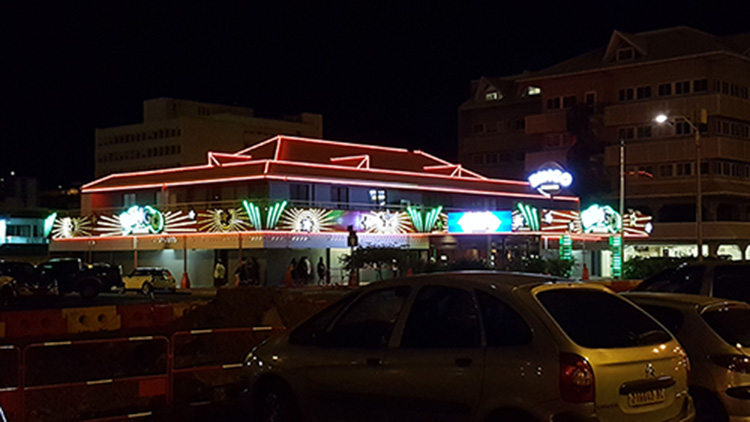A, How to identify the brightness of the LED display
1, Make a 3 v dc power supply for easy connection leds , had better use battery production. Can use two button batteries, installed in a small plastic tube and lead to two probes as output is negative, the end made a switch shrapnel directly, when used, plus or minus probe corresponding contact light-emitting diodes (leds) plus or minus pin, hold down the end of the switch, light electric light tube.
2, secondly, using photosensitive resistance and digital multimeter, simple metering device, the photosensitive resistance leads to the two thin wires, directly connected to the digital multimeter, on two pens and a multimeter gear in 20 k position (depending on the photosensitive resistance, make precise readings), note that the measured value is the actual value of photosensitive resistance, therefore, the brighter the light, the smaller the numerical value.
3, in a LED light-emitting diode, with more than 3 v dc lights, light head are connecting to and close to live good photoconductive resistance photosensitive surface, at this point, the multimeter reading, in order to distinguish the luminous intensity of LED.
B, The brightness identification level, refers to the human eye can distinguish between the image from the black to the white brightness level.
LED electronic display the grey scale of some high, levels up to 256 or 1024. But because the human eye sensitivity to the brightness is limited, and cannot fully identify the grey scale. That is to say, may be a lot of adjacent levels of gray eyes look identical. And eyes resolution per each are not identical. For display, the level of human recognition nature is the more the better, because the display image is, after all, give a person look. The brightness of the human eye can distinguish level, the more means that the display of color space, the greater the show colorful potential. Brightness identify class can use special software to test, general display can reach more than 20 level even better grades.
C, Brightness and the visual Angle of requirements:
Indoor full color LED display brightness to above 800 CD/m2, outdoor full color brightness is more than 1500 CD/m2, to guarantee the normal work of the screen, otherwise it will because the brightness is too low and can't see shown in the image. Mainly by the size of the brightness of LED tube core is good or bad decision. Viewing angles directly depends on the size of the led display how many of the audience, and the bigger the better. Perspective is mainly determined by the tube core is encapsulated.
It is necessary to determine the brightness of the LED electronic display screen, the brightness of the LED display the current designs city-lighting requirements, or new rules, the brightness of the LED screen is too high, will cause trouble to the nearby residents. In order to avoid the adverse reaction, which requires businesses in custom and maintenance of led display need to have relevant professional knowledge.
Two methods to control the LED brightness:
Current through the LED is a kind of change, general LED tube allows continuous working current is controlled in 20 ma, besides red leds have saturation phenomenon, other LED brightness basically proportional to the flow of electric current; Another method is to use human eye visual inertia, using pulse width modulation method to realize gray scale control, which is periodic change light pulse width (duty cycle), as long as the repetition of the light cycle is short enough (that is, the refresh rate is high enough), the human eye is feeling less than glowing pixels in jitter. Due to the pulse width modulation is more suitable for digital control, so widely used in microcomputer to provide LED display content today, almost all the LED screen is controlled by pulse width modulation to gray scale.
LED control system usually consists of main control box, scanning board and display control device of three parts:
Main box from computer display card to get a screen pixel brightness of of all kinds of data, and then reassigned to a number of scanning board, scanning each one is responsible for the control of the LED screen number of row (column), and each row (column) on the LED display control signal is transmitted in serial mode. There are two types of serial transmission display control signal way: one is a centralized control each pixel gray scanning board, scanning board will come from the control box of the brightness values of all pixels decomposition (pulse width modulation), then all LED to the opening of the signal pulse form (0) light is 1, dawn line by way of serial transmission to the corresponding LED on, whether to control its light. This way using the device is less, but the serial transmission data volume is bigger, because in a repeated cycle of light, each pixel under the gray level 16 need 16 pulse, under the gray level 256 to 256 pulses, because the device operating frequency restricted, normally only the LED screen be gray level 16.
Another method is to scan the board serial transmission content not every LED the brightness of the switch signal instead of an 8 bit binary value. Each LED has an own pulse width modulator to control the light time. Thus, in a repetitive cycle of light, each pixel point under the gray level 16 only need four pulse, under the gray level 256 just eight pulse, greatly reduces the frequency of serial transmission. With this kind of decentralized control LED gray-scale method can easily achieve a level 256 gray scale control.
|
Easy to identify outdoor LED screen brightness  Previous News: [more..] Month News archive All News List |





